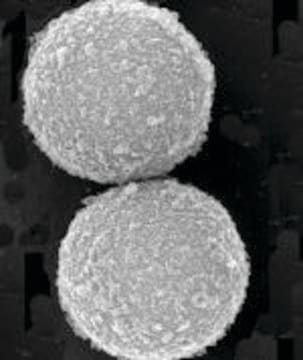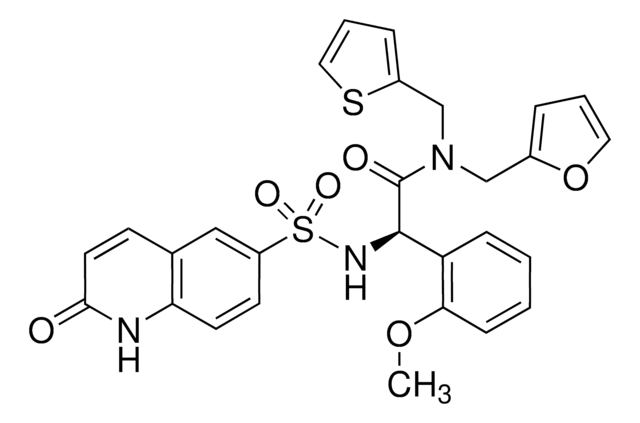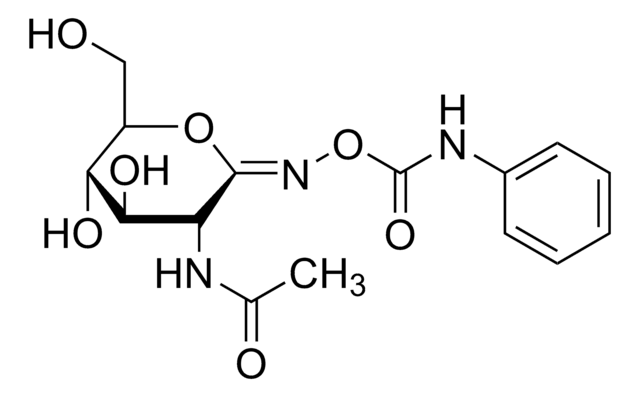MABE1094
Anti-Cdx1 Antibody, clone 123a
clone C, from mouse
Synonym(s):
Homeobox protein CDX-1, Caudal-type homeobox protein 1
About This Item
Recommended Products
biological source
mouse
Quality Level
antibody form
purified immunoglobulin
antibody product type
primary antibodies
clone
C, monoclonal
species reactivity
human
technique(s)
ChIP: suitable
immunocytochemistry: suitable
western blot: suitable
isotype
IgG1κ
NCBI accession no.
UniProt accession no.
shipped in
wet ice
target post-translational modification
unmodified
Gene Information
human ... CDX1(1044)
General description
Specificity
Immunogen
Application
Epigenetics & Nuclear Function
Transcription Factors
Western Blotting Analysis: A representative lot detected the target band in CDX1-expressing colorectal cancer (CRC) cells (HT55, LS174T, RCM-1, SK-CO-1), but not in non-Cdx1-expressing CRC (DLD-1, HCT116, SW48, RKO) cells (Chan, C.W., et al. (2009). Proc. Natl. Acad. Sci .U. S. A. 106(6):1936-1941).
Western Blotting Analysis: A representative lot detected the endogenously expressed CDX1 in HCT116 human colorectal cancer (CRC) cells. Antibody blocking with the immunogen peptide, but not with a C-terminal peptide, prevented the target band detection (Chan, C.W., et al. (2009). Proc. Natl. Acad. Sci .U. S. A. 106(6):1936-1941).
Immunocytochemistry Analysis: A representative lot detected a downregulated CDX1 immunoreactivity among SW1222 and LS180 colorectal cancer (RC) cell colonies following prolyl-hydrolase inhibitor DMOG (Cat. No. 400091) treatment as a result of enhanced normoxia HIF-α transcription activity (Ashley, N., et al. (2013). Cancer Res. 73(18):5798-5809).
Immunocytochemistry Analysis: A representative lot detected a high expression of the enterocyte differentiation marker CDX1 among colonies formed from colorectal cancer (RC) cells (SW1222, LS180, CCK-81) under normoxia condition, while a much lower Cdx1 immunostaining was seen among the colonies formed under hypoxia condition (Yeung, T.M., et al. (2011). Proc. Natl. Acad. Sci. U. S. A. 108(11):4382-4387).
Immunocytochemistry Analysis: A representative lot immunostained LS174T and CDX1-transfected HCT116 colorectal cancer (CRC) cells. No staining was seen among mock-transfected HCT116 cells or CDX1 shRNA-transfected LS174T cells (Chan, C.W., et al. (2009). Proc. Natl. Acad. Sci. U. S. A. 106(6):1936-1941).
Chromatin Immunoprecipitation ChIP) Analysis: A representative lot detected CDX1 occupancy at the KRT20 promoter site using chromatin preparation from HT55 human colorectal cancer (CRC) cells (Chan, C.W., et al. (2009). Proc. Natl. Acad. Sci. U. S. A. 106(6):1936-1941).
Quality
Western Blotting Analysis: 1.0 µg/mL of this antibody detected Cdx1 in 10 µg of human Caco-2 colorectal cancer cell lysate.
Target description
Physical form
Storage and Stability
Other Notes
Disclaimer
Not finding the right product?
Try our Product Selector Tool.
Storage Class Code
12 - Non Combustible Liquids
WGK
WGK 1
Flash Point(F)
Not applicable
Flash Point(C)
Not applicable
Certificates of Analysis (COA)
Search for Certificates of Analysis (COA) by entering the products Lot/Batch Number. Lot and Batch Numbers can be found on a product’s label following the words ‘Lot’ or ‘Batch’.
Already Own This Product?
Find documentation for the products that you have recently purchased in the Document Library.
Our team of scientists has experience in all areas of research including Life Science, Material Science, Chemical Synthesis, Chromatography, Analytical and many others.
Contact Technical Service







